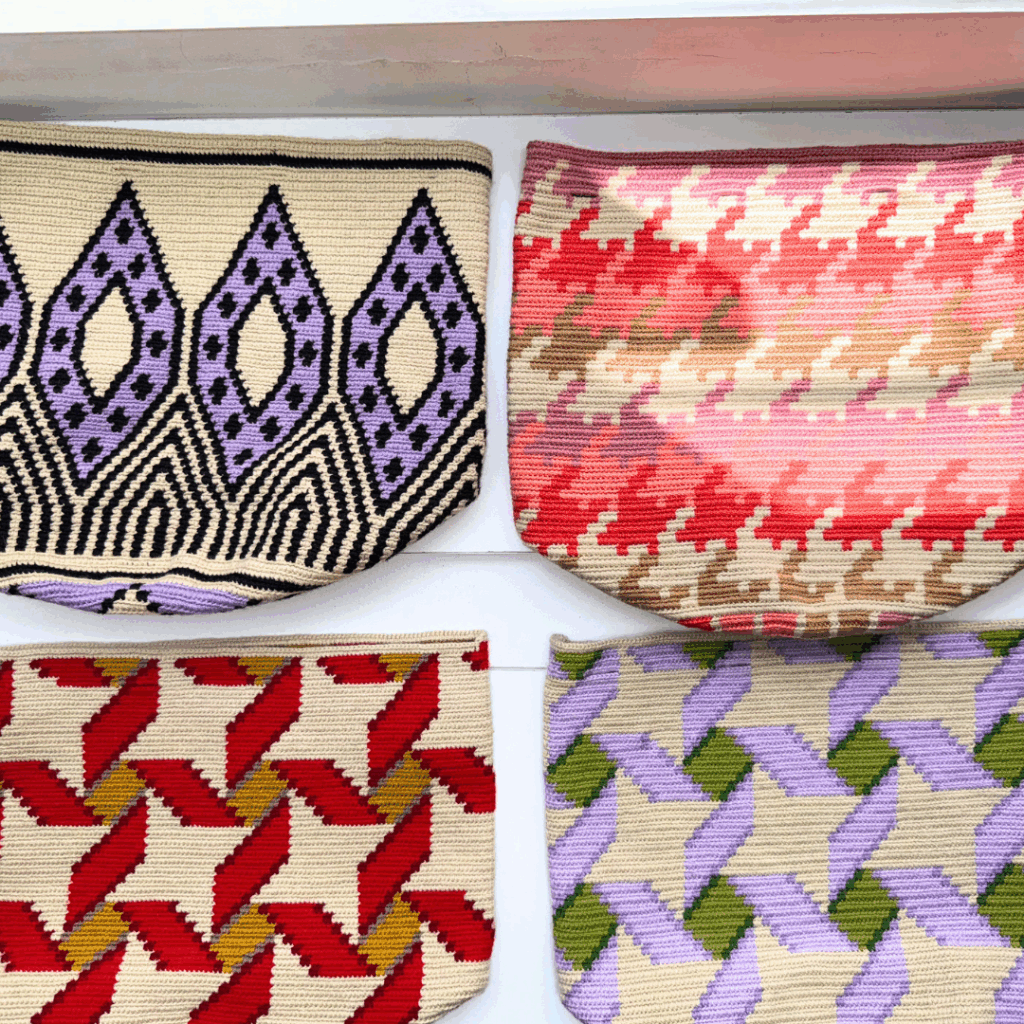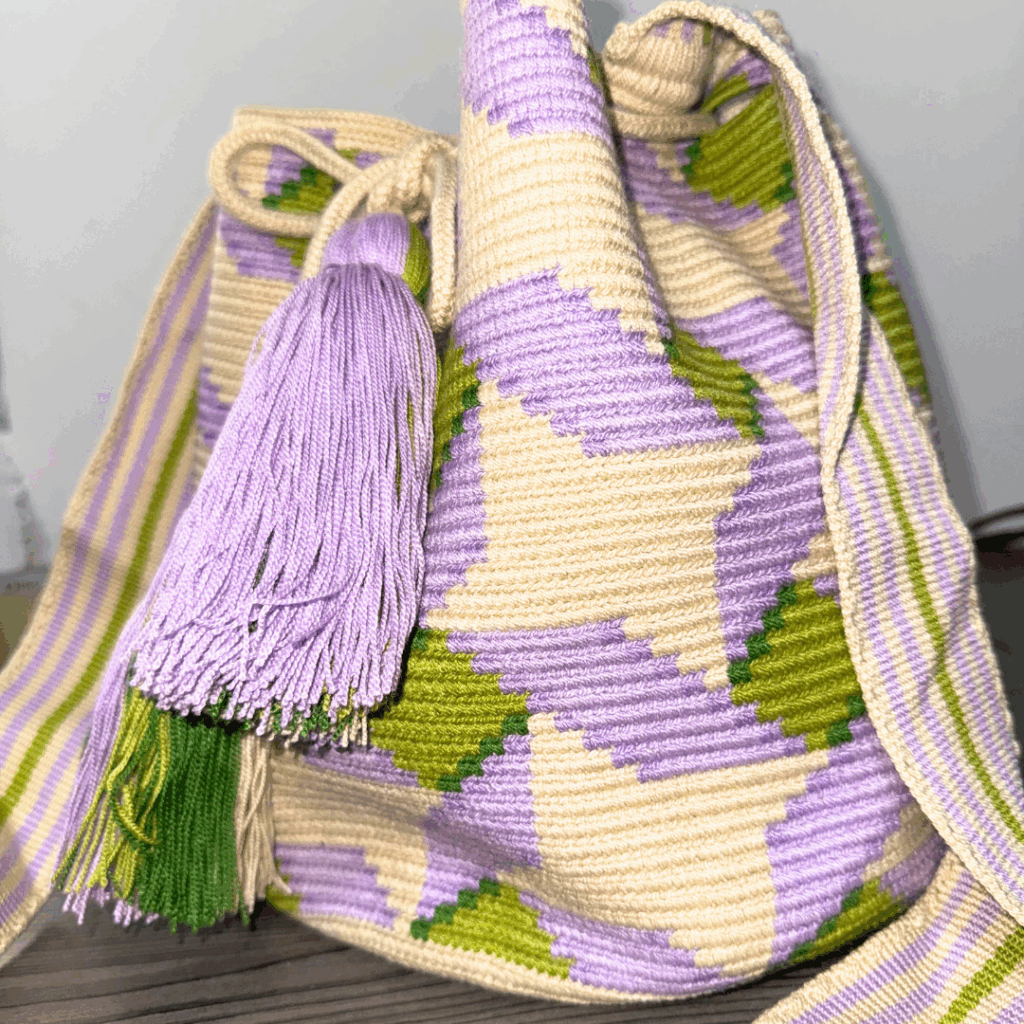
Every stitch of a Wayuu bag pattern tells a story, one that stretches back through generations of indigenous wisdom, artistry, and cultural identity. Far beyond being beautiful accessories, Wayuu bags are deeply symbolic pieces of wearable art, handwoven by the Wayuu people of La Guajira, Colombia. The intricate patterns, often mistaken for mere decoration, are actually codes of identity, philosophy, and spirituality.
In this article, we’ll explore what these patterns represent, why geometric designs are so important, the types of patterns that exist, and whether these designs are inherited or reimagined over time. Whether you’re a fashion lover, cultural enthusiast, or artisan supporter, understanding the meaning behind a handmade Wayuu bag enriches the appreciation of this unique tradition.
A Wayuu Bag pattern (known as kanaasü in the Wayuunaiki language) is a complex geometric motif woven into the fabric of the authentic Wayuu bag. Each pattern is more than a visual element, it’s a visual expression of the Wayuu woman’s thoughts, environment, and beliefs. No two patterns are exactly alike, and each weaver has her own visual language, often passed down through her maternal lineage.
The designs are meticulously crafted using a single thread technique that results in vibrant mosaics of color and form. Creating a Colombian Wayuu bag may take up to three weeks, depending on the complexity of the design and size of the bag.
One of the most striking characteristics of a Wayuu Bag pattern is its geometric nature. But why are the motifs composed of triangles, zigzags, diamonds, and lines?
Geometry is sacred in Wayuu cosmology. These shapes are not random, they are rooted in nature, dreams, and spiritual beliefs. A diamond might represent the eye of a guardian spirit. A zigzag could symbolize the journey of life, full of twists and turns. Triangles may speak of mountains or balance in the universe.
The Wayuu worldview is built on dualities and balance, light and dark, sky and earth, male and female. Geometric patterns allow weavers to represent these abstract ideas in visual form. The symmetry and repetition seen in each authentic Wayuu bag reflect this harmony with nature and the cosmos.
To dive deeper into the cultural meaning and symbolism of these traditional patterns, check out this detailed article by Hands of Colombia, which explores the artistry and history behind Wayuu mochila bags.

While each Wayuu bag is unique, there are recognizable categories of patterns that frequently appear. Some of the most well-known Wayuu Bag patterns include:
Each handmade Wayuu bag can feature one or a combination of these motifs, depending on the weaver’s story and purpose. The naming of the pattern adds another layer of cultural significance and preserves linguistic heritage.
One of the most fascinating aspects of the Wayuu Bag pattern tradition is its fluidity. These patterns are both inherited and reimagined.
Traditionally, young Wayuu girls learn to weave during a rite of passage known as encierro (seclusion), where elder women teach them not only the technical skills but also the symbolic meanings behind each design. This transmission of knowledge ensures cultural continuity. In this sense, many Wayuu bags carry ancestral wisdom, passed down like a family heirloom.
However, creativity is also a vital part of Wayuu artistry. Modern Colombian Wayuu bags may include new color combinations or hybrid designs inspired by personal dreams, current events, or urban fashion trends. This is where tradition meets innovation, making each handmade Wayuu bag a one-of-a-kind expression.
Contemporary Wayuu artisans continue to reinterpret traditional designs without losing the soul of their craft. As demand grows worldwide, many cooperatives work to protect the authenticity of these products while encouraging cultural evolution.
Understanding a Wayuu Bag pattern is like reading a visual poem written in symbols. These intricate designs go beyond aesthetics; they are carriers of knowledge, spirituality, and identity. Whether rooted in tradition or sparked by innovation, each pattern in a handmade Wayuu bag holds a powerful story waiting to be told.
By choosing an authentic Wayuu bag, you’re not only embracing a unique piece of Colombian culture, you’re supporting the survival of an artistic legacy passed from generation to generation. Click here to know more about Wayuu culture.
Discover our online store featuring a stunning collection of Wayuu bags. Shop now and embrace the beauty of tradition!